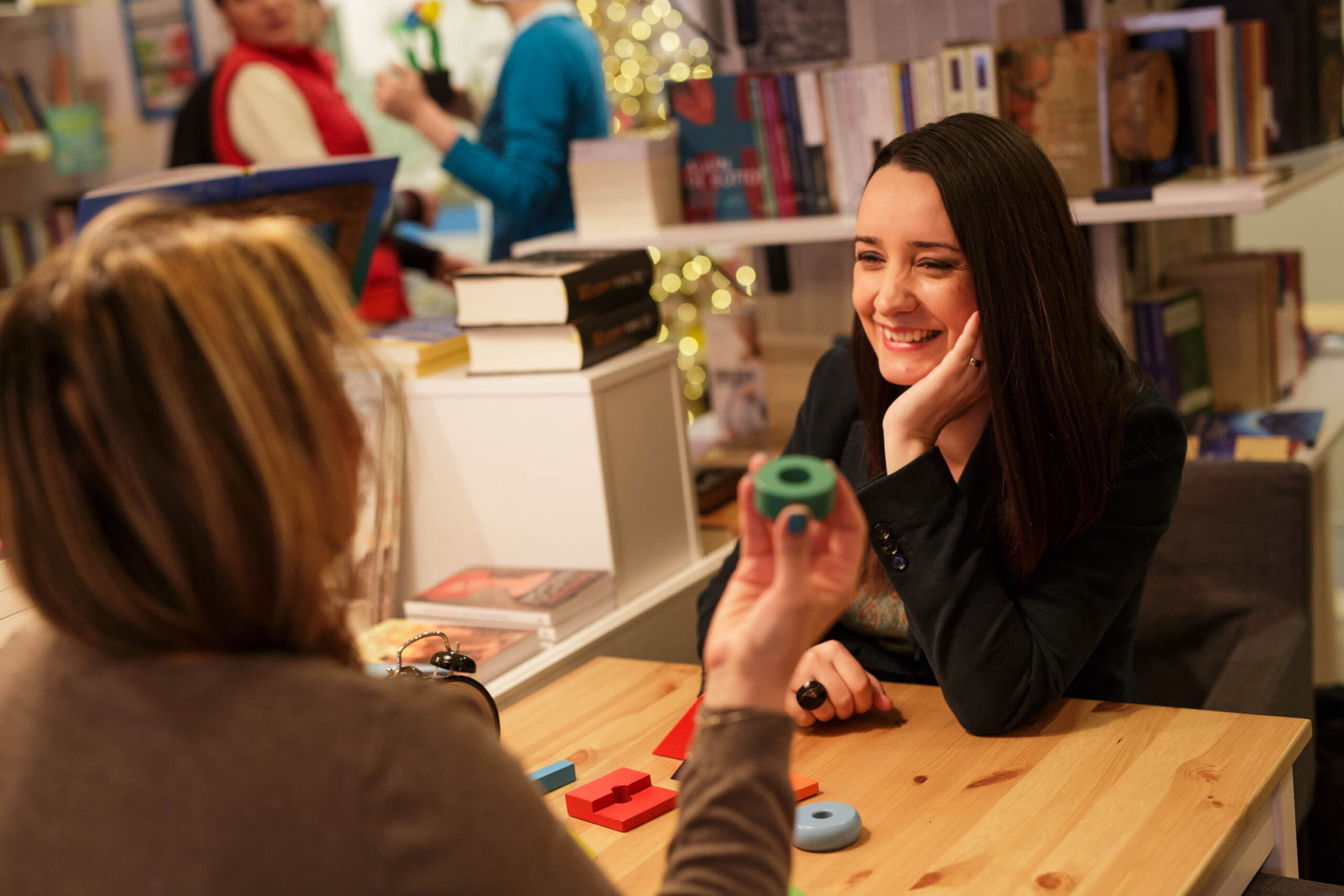Developing SELF-leadership skills has been the purpose of my coaching, training and learning practice for the past 10 years. According to Bryant and Kazan (2012), self-leadership involves a deep understanding of our own identity, strengths and aspirations, and the ability to influence our own communication, emotions and behaviour towards achieving a goal.
I believe the best thing we can offer ourselves and others on this often bumpy road to self-transformation is the gift of presence. The quality of our presence is the driving force towards meaningful conversations, deeper relationships and an insightful learning process.
Why self-centring and grounding are essential to foster presence
This art of guiding oneself through life’s challenges and opportunities with a sense of purpose and direction is intricately connected to self-centring and grounding practices. Because, in order to follow and lead oneself effectively, individuals must first find stability within, anchor their emotions and thoughts in the present moment, and maintain clarity and composure.
Both self-centring and grounding involve turning inward to regain tranquility. These two practices complement each other.
While grounding primarily focuses on connecting our self with the outer world through sensory experience, self-centring emphasises on acknowledging the internal world of thoughts, emotions and values. Their comprehensive approach to emotional regulation and resilience helps us navigate easier through the complexities and unpredictability of life.

Self-Centring is the process of returning our focus and awareness to our core or true self.
- it involves finding our physical, emotional and mental balance, which is often characterised by a sense of inner calm, clarity and self-assuredness
- self-centring techniques encourage us to let go of distractions and external pressures, turning our attention inward to reconnect with our values, beliefs and emotional state
- self-centring can be achieved through practices like mindfulness, meditation or deep introspection
Grounding is a practice that focuses on connecting our self with the present moment and our physical surroundings.
- it is about coming to here and now, connecting our self to the outer reality, reducing the impact of stress, anxiety or overwhelming emotions
- grounding techniques encourage us to use our senses (sight, sound, touch, taste, smell, feel) to stay rooted in the present moment; this, in turn, fosters emotional stability and calmness
- grounding can be particularly useful in situations where we feel disconnected or emotionally overwhelmed; it helps us return to a more balanced state by focusing on the immediate environment and physical sensations
Self-centring does not mean to be excessively into oneself, but present, aware and balanced. Just as grounding does not mean to be too deeply rooted, but actively connected and holding our ground with kindness, acceptance and grace.
Self-centring can help us understand our core values and emotional triggers, which can enhance our ability to ground ourselves effectively. While grounding can provide immediate relief and a sense of calm, making it easier to focus on self-centring practices. It’s a cyclic process.
The COACH state – a practical exercise for self-centring and grounding

The COACH state exercise was developed by Robert Dilts, leading coach, behavioural skills trainer, author and consultant in the field of leadership and change, pioneer of Neurolinguistic Programming (NLP).
What I like about it is that it’s immediately applicable in any context and embodies self-centring and grounding in one practice.
The COACH state is one of my favourite rituals before attending a personal or professional meeting, a training course or a coaching session with a client.
For better understanding, Robert Dilts first talks about the CRASH state. This is a highly ineffective and self-sabotaging state we may experience sometimes. The acronym comes from Contraction, Reaction, Analysis Paralysis, Separation, Hurt and Hatred. Noticing this state is the first step towards actively replacing it with a helpful one.
On the opposite side, we have the COACH state – the positive result of a deliberate practice to self-centre and ground before starting a conversation, joining a meeting, diving into a learning process. This mindful exercise can be done anytime, helping us operate from a resourceful place, with high energy vibration.
Here is the step-by-step process. Instead of explaining it, I chose to turn it into a guided reflective exercise. Once you take in each step, you may want to try practicing again, this time with your eyes closed. It works better due to the lack of external stimuli and a deeper connection with yourself.
Also, make sure you allow your body to come up with its own movement to express freely the commitment on each level. Apart from the language, embodiment is key to integrating the message better. Sometimes it’s even more important, as we know nonverbal communication speaks louder than words.
- Centred: I am slowly breathing in and out, grateful for the aliveness I feel. I am paying attention to my inner state, the sensations in my body, my thoughts and feelings. I am looking for myself – my mental, physical and emotional center. Finding it, I welcome myself with kindness and acceptance. I feel safe and fully aligned. I feel centred. Invite your body to find a meaningful gesture for the feeling of being centred (e.g. folding hands, straight posture, hand on chest etc.)
- Open: As I feel centred, I am ready to open up to whatever may come. I have the willingness to learn and engage fully, with a receptive mind. I am letting go of all preconceptions and judgments, open to new ideas and perspectives. I approach the topic and people with the beginner’s mind. I feel open. Invite your body to find a meaningful gesture for opening up (e.g. arms widely spread, hands open etc.)
- Attending with Awareness: As I feel centred and open, I attend with awareness, present in the moment. Whatever the context, I choose to listen actively to others, observe the surroundings and immerse myself in the experience mind, body and spirit. I am here and now, fully aware. Invite your body to find a meaningful gesture for attending with awareness (e.g. drawing an imaginary circle with your arms around your body, open eyes wide etc.)
- Connected: As I feel centred, open and aware, I am here to find a connection with the topic, the place and the people involved. I know this connection fosters a deeper understanding and engagement in the process. Feeling connected gives me a sense of relatedness, both soothing and resourceful. As social being, I am naturally looking for a sense of connection and I accept to connect with others too. I feel connected. Invite your body to find a meaningful gesture for the feeling of being connected (e.g. close eyes, touch an object etc.)
- Holding time and space: As I feel centred, open, aware and connected I am ready to create an environment where others feel safe, respected and free to express themselves. I am here to listen openly, offering support and fostering a non-judgmental atmosphere. Holding time for others means pacing with them in their own rhythm. Holding space for others means fostering silence when required. I am here and now, centred, open, aware, connected, ready to hold time and space for you. Invite your body to find a meaningful gesture for the feeling of holding time and space (e.g. look up with your eyes closed, open palms of your hands facing them up and holding them still etc.)
What if a challenging situation takes me out of the COACH state into the CRASH state?
In my experience, one of the first signs of crashing is when letters start falling apart. At one point you may be feeling like losing your Centring, then Openness, Awareness, Connectedness or ability to Hold space for the other. The order in which you crash is irrelevant. Noticing you are zoning in and out of the COACH state, you may want to take a moment to pause, reflect and address the challenge. Question yourself about the triggers that might have led you to, let’s say, losing your openness. Self-sabotaging may show up in many shapes and sizes. Acknowledge your thoughts and feelings, mentally comit to solving the matter later, then come back to here and now. Self-acceptance is key to avoiding starting invisible fights and staying focused in the present moment. We are all human here, our states are in constant flow. Learn to trust your innate resilience and ability to bounce back at will. Be gentle to yourself.
You may have noticed by now that the COACH state exercise can help you self-centre and ground in any profession you practice or discovery journey you take. It puts you in a creative mindset and a generous heartset, bringing out the best in you. This is why I also find it useful when managing complexity, uncertainty, anxiety, panic attacks and generally conflicting situations when we may feel mentally drained or emotionally overwhelmed. This practice allows us to stay present, focused and safe, always coming back to ourselves when we get lost, either by chance or by choice. You can read more about the COACH state here or see a short guided video demonstration of the exercise I did a while back (min 1:30:00). Enjoy!



